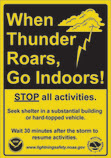Over the course of the past year, FEMA’s Individual and Community Preparedness Division (ICPD) has been developing a new training course entitled, Building a Roadmap to Resilience: A Whole Community Training. This course is designed to inspire and provide participants with information intended to increase a community’s resilience through the whole community approach to emergency management. On July 25-27, 2016, ICPD and the Emergency Management Institute will host the first delivery at the National Emergency Training Center in Emmitsburg, MD.
FEMA published
A Whole Community Approach to Emergency Management: Principles, Themes, and Pathways for Action in December 2011. This report provides communities a foundation for developing a community-centric approach focusing on the strengths and capabilities of the community team to better prepare for, protect against, respond to, recover from, and mitigate against all hazards. Building a Roadmap to Resilience is intended to build upon the findings of FEMA as well as best practices uncovered by local efforts and turn them into manageable actions that local government entities can implement. Participants in this course will receive the tools and knowledge to establish a community coalition and to encourage community leaders to make resiliency gains within the unique circumstances of their jurisdiction.
The target audience for this course includes community stakeholders interested in disaster resilience, and emergency management professionals with less than three years of experience who support or implement inclusive emergency management, community disaster planning, preparedness activities, and community outreach partners at the state and local levels.
If you know of individuals who may be interested in attending this offering, please direct them to their
State Training Officer (or point of contact) to submit a FEMA Form 119-25-1, General Admissions Application (attached). The
deadline to register is June 20, 2016.
Once an individual is placed into the course, NETC Admissions will send an acceptance email with travel instructions. Seats for the course are on a first-come, first-served basis. Once you are accepted into the course, you will receive some additional information from course managers regarding the agenda and what (if any) materials you should bring with you.
